This article is about ground cover plants, and what you need to look for before choosing one for your garden. Whether you are looking for fast-growing, perennial flowering groundcover plants, drought/heat tolerant, or low-maintenance ground covers, we’ve got you covered!
Or maybe you are looking for groundcovers that are easy to control and perform in full sun or shade? Well, these and many more questions have been answered in this article.
Groundcovers not only add visual beauty to your landscape, but they also help cut back on the resources and energy you put into your garden, keep weeds out, prevent erosion and help fill up bare spaces.
But before you plant any ground cover, you need to check with your local county extension office to find out what is considered invasive.
Having said that, let’s dive in.
Best Ground Cover Plants for Your Landscape
1. Creeping Juniper (Juniperus horizontalis)
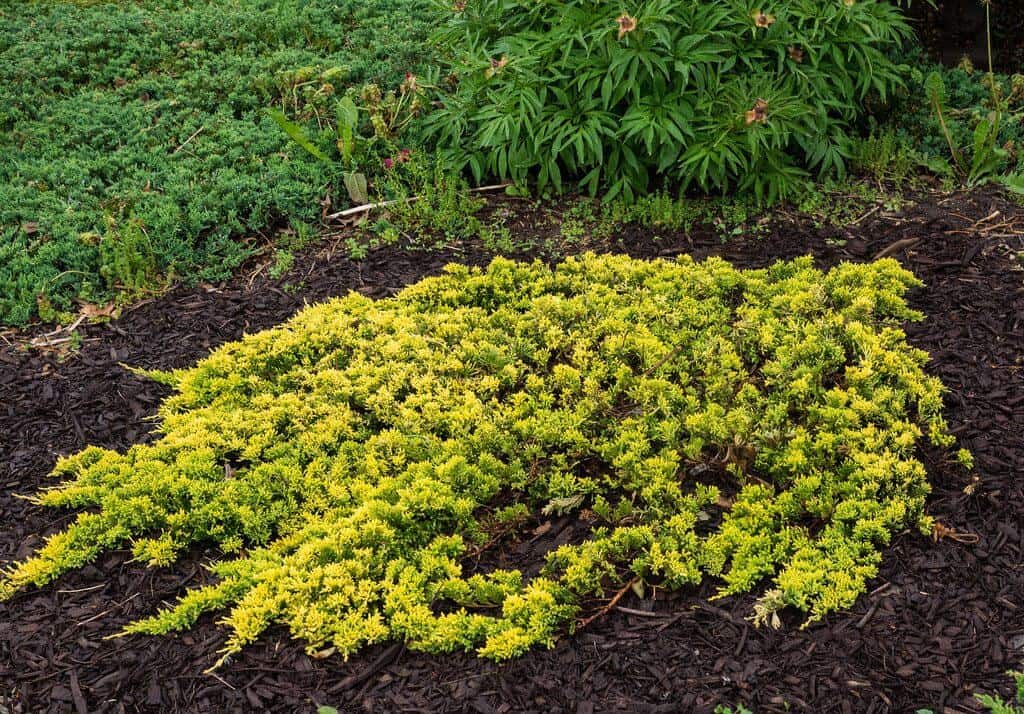
This is a low-growing, sprawling evergreen ground cover plant that grows to about 18 inches tall and can spread to as much as 8 feet wide.
It is an excellent drought-tolerant ground cover plant for large areas with difficult terrain where growing grass is difficult especially on slopes.
Creeping Juniper is moderately salt-tolerant and grows best under full sun and in well-drained, medium to dry sandy soils.
2. St. John's Wort (Hypericum species)
St. John’s Wort is a spreading evergreen or semi-evergreen shrub with bright yellow flowers mostly used to cover slopes. This mid-summer bloomer grows best in full sun or part shade to a height of about 12 to 36 inches.
In addition to this, St. John’s Wort is a low maintenance plant and it is also drought and deer-tolerant hence a good choice for your landscape.
Tip: Cut your St. John’s Wort to the ground in spring to rejuvenate it.
3. Cast Iron Plant (Aspidistra eliator)
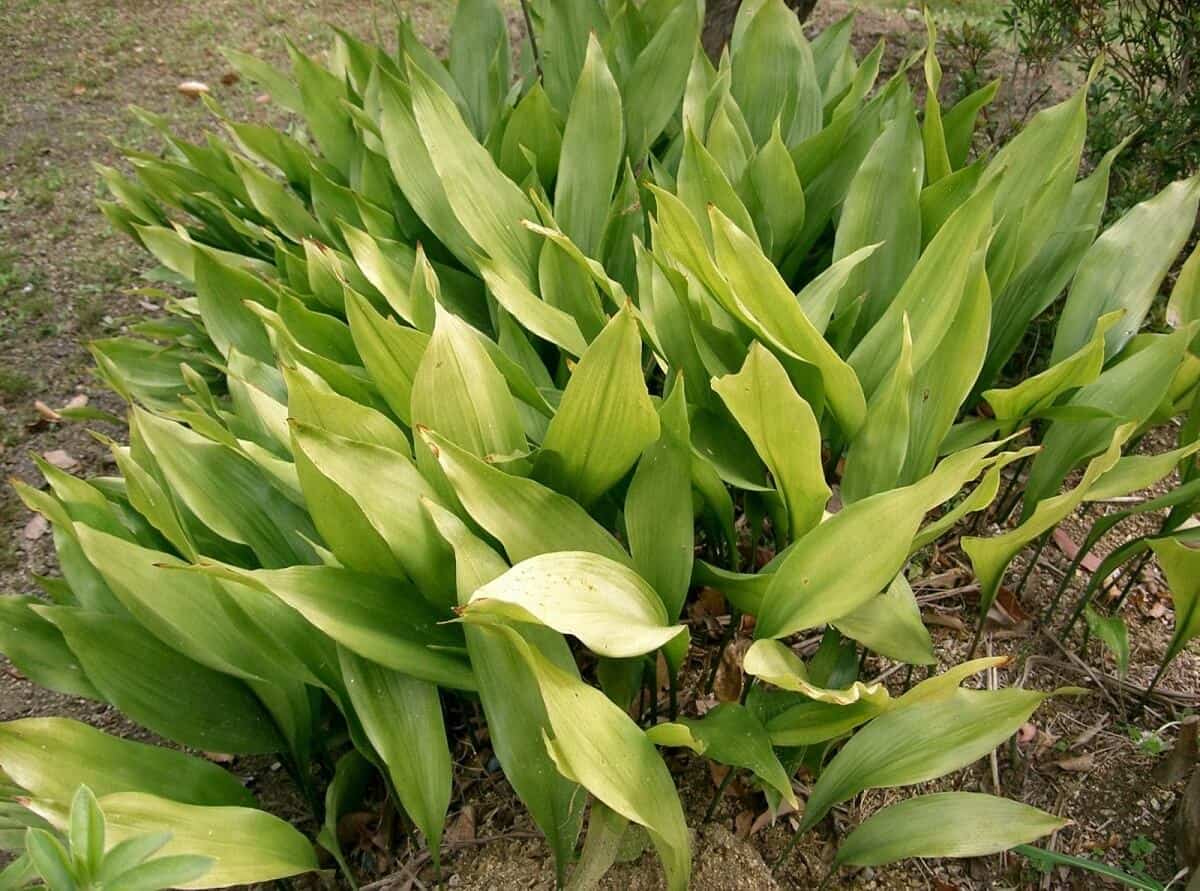
Cast Iron Plant is an evergreen perennial with upright growing lance-shaped leaves. The cast iron plant is one of the most effective and easy-care ground cover plants requiring water application during establishment and periodical application once established.
It is a drought-resistant ground cover plant that grows to about 12 to 30 inches tall in almost any soil.
4. Trailing Lantana (Lantana species)
Trailing lantana is also commonly known as creeping lantana or weeping lantana. It is a rapidly growing plant with the ability to thrive in drought and even grow and reproduce under the full sun not forgetting, it’s one of the best ground cover plants with a long bloom season.
The trailing lantana grows to a height of about 12 to 18 inches and produces beautiful multi-colored, yellow, red and orange, pink, lavender, and white flowers.
It is easy to care for trailing lantana. Just prune it back in spring to remove the deadwood.
5. Carpet Bugle Ajuga (Ajuga reptans)
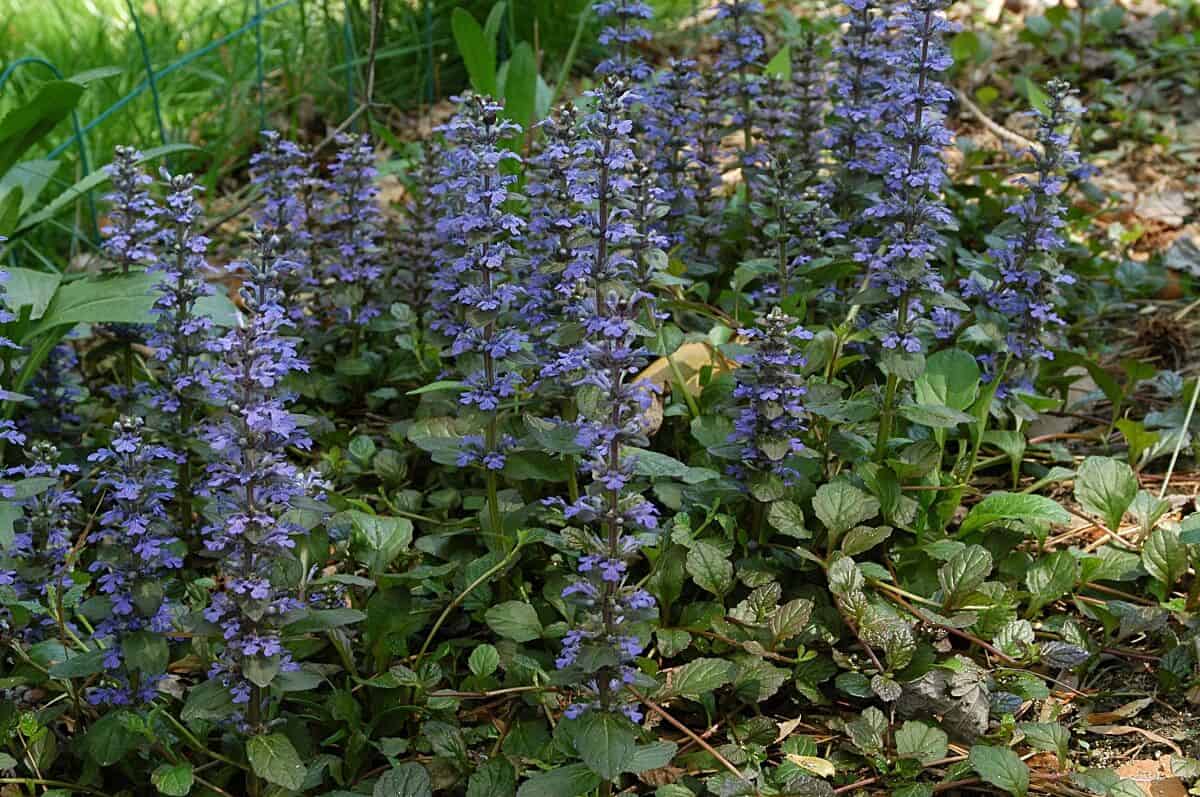
Carpet bugle Ajuga also commonly known as bugleweed is a dense, fast-growing ground cover and a member of the mint family. It is an herbaceous perennial ground cover plant with purple, green, or variegated leaves and beautiful blue flowers.
This spring bloomer grows to a height of about 6 inches in full sun to partial shade.
Note: Be careful as Carpet Bugle Ajuga may be invasive in turf.
6. Creeping Phlox (Phlox subulata)
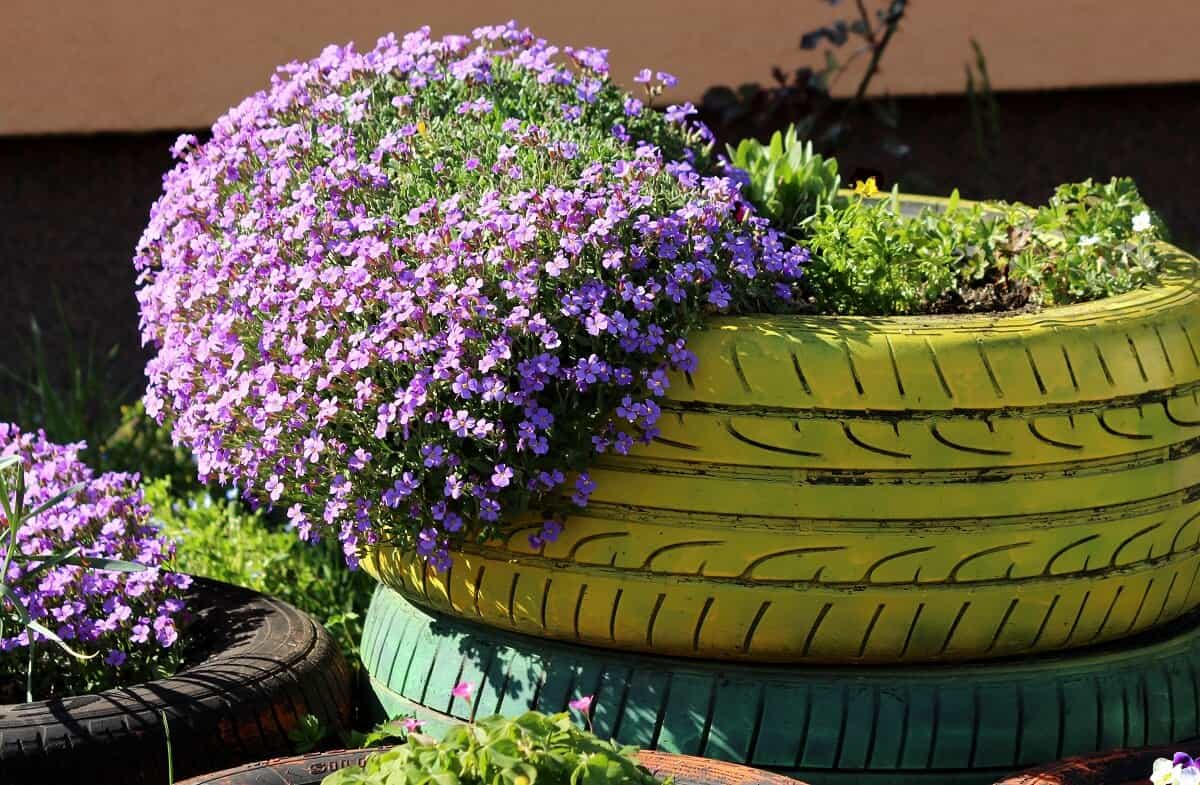
Creeping phlox is a short creeping perennial that most gardeners plant on a slope or a retaining wall. It is a spring bloomer and produces pink, rose, lavender, or white flowers that cover its tiny needle-like evergreen foliage.
Cultural requirements for creeping phlox are few. Grow it in not overly-rich well-drained soil and water it only when the weather is dry. Also, make sure to give it a light prune after it is done with flowering.
Additionally, creeping phlox is shallow-rooted therefore it is easy to pull it out whenever the need arises especially when keeping it out of areas it doesn’t belong to.
7. Barren wort (Epimedium species)
Barren worts are perennial ground cover plants with evergreen or semi-evergreen leaves and dainty crimson, white or yellow flowers. The barren wort plant is an early spring bloomer that thrives best in full to part shade and tolerates growing amongst trees roots.
These ground covers are slow-growing but, you can speed up their growth and establishment by amending the soil with organic matter and keeping the soil uniformly moist in summer.
Also, ensure to cut back the plants in late winter before the emergence of new growth for enhanced beauty.
8. Creeping Jenny (Lysimachia nummularia)
Also known as moneywort, creeping Jenny is one of the best low-maintenance ground cover plants that you should consider for your landscape. This evergreen perennial ground cover plant is hardy in USDA Zones 3 to 9. Creeping Jenny thrives best in full sun to partial shade and prefers moist, well-drained soils.
Caution: Creeping Jenny is invasive therefore, before you plant it in your landscape, check with your local extension office to be sure that it is not restricted in your area.
9. Purple Heart (Setcreasea purpurea)
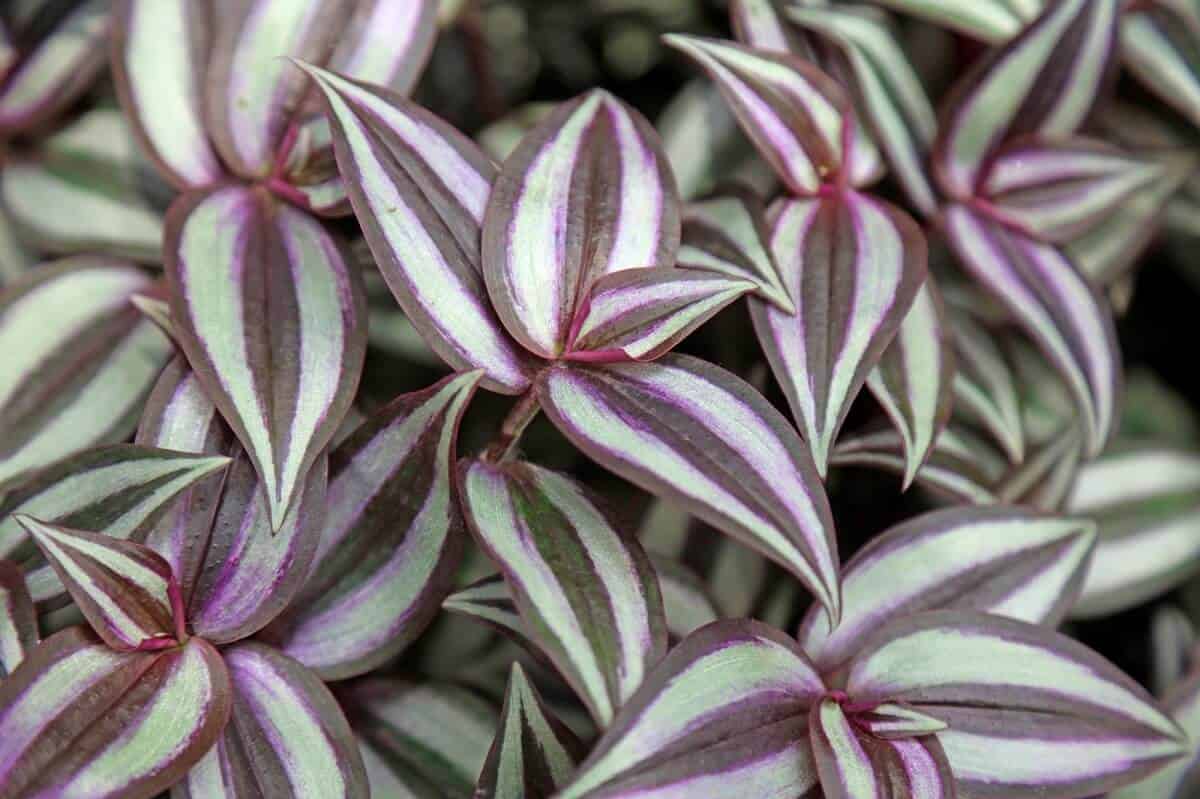
Also known as purple heart wandering jew, the purple heart is an herbaceous trailing plant with dark purple lance-shaped leaves and lavender to purple flowers. Purple heart performs best in both sun and shade and can withstand heat and drought conditions.
Although it dies back to the ground in winter especially in colder areas, purple heart always comes back from the roots in spring.
Remember to cut back your purple heart plants after flowering so that they don’t become spindly.
10. Lily-of-the-Valley (Convallari majalisa)
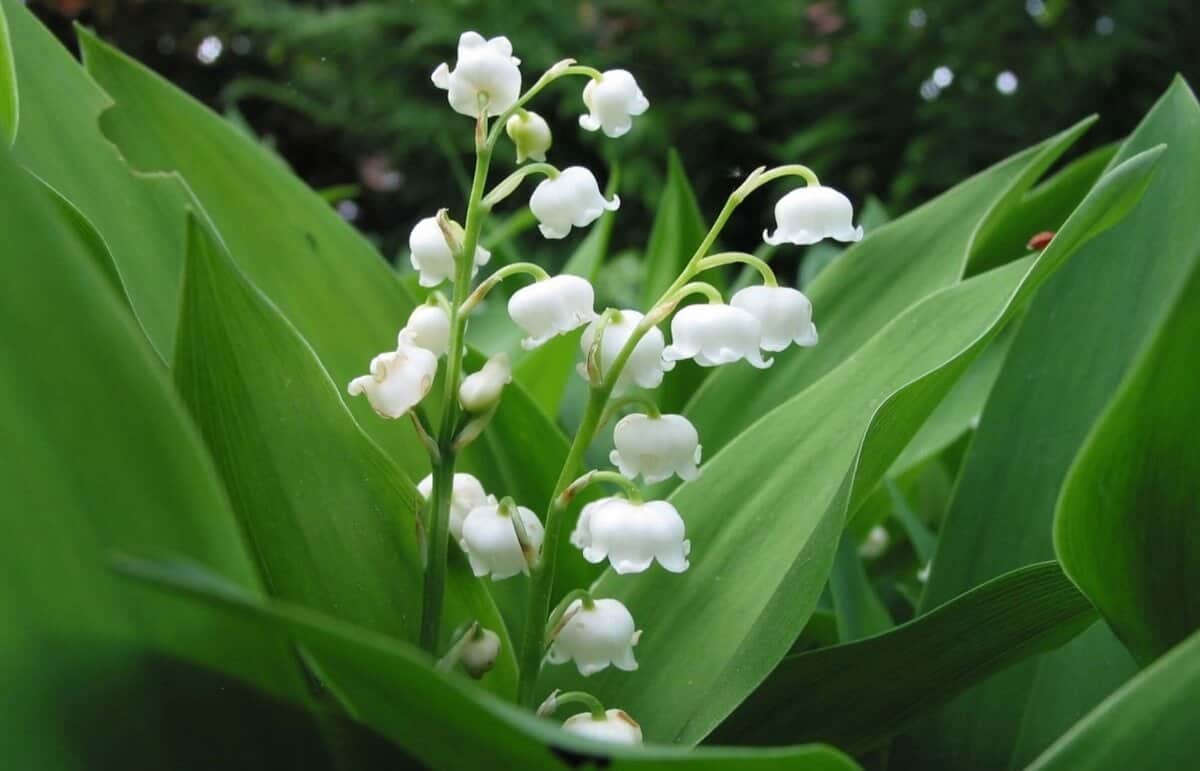
Lily of the valley is a popular garden plant that grows in dense colonies from a slender underground rhizome to a height of about 8 inches. It is also among the most fragrant flowers grown in the garden.
This vigorous spreading perennial ground cover plant has dark green leaves that turn yellow in fall and fragrant, white, bell-shaped flowers.
It grows best in moist, fertile, organic soil and shade.
11. Creeping Thyme (Thymus serpyllum)
Also known as wild thyme, creeping thyme is a woody perennial ground cover plant that grows to only about 3 inches tall.
Creeping thyme loves full sun and low fertility, well-drained alkaline soils. Its leaves are fragrant and its deep pink flowers bloom from June through July.
The creeping thyme is a low-lying ground cover and a good choice for replacing lawn entirely or for planting as a filler between ground stepping stones. Use creeping thyme as a ground cover plant for your landscape to help control weeds, repel deer as well as attract honey bees and butterflies.
Learn How to Grow Thyme from Seed Step by Step
12. Heuchera (Heuchera spp)
Heuchera, also known as coral bells is an evergreen perennial known for its silver-green/brown vibrant foliage that spread to about 18 to 24 inches.
Grow your Heuchera in full to partial shade (depends on variety) and well-draining soil.
This deer-resistant flowering ground cover plant is low maintenance and blooms in late spring to attract bees and butterflies to the garden. Some Heuchera varieties for groundcover include; paprika, forever red, zipper, and solar power.
Read more on 17 Shade Flowering Plants and Perennials that Grow Easily
13. Stonecrop (Sedum spp)
Stone crop, also known as creeping sedum is an easy-growing succulent plant with low maintenance and cultural requirements. The plant is a low-growing perennial and produces flowers above the base foliage that attracts butterflies and bees to your garden.
It is also resistant to drought hence requires little or no supplemental water even in the driest conditions.
Conclusion
There you have it!
Those are the thirteen best ground cover plants for your landscape that will help in filling up bare spots, keeping weeds off, and preventing erosion among others.
Do you have any additions to our list? Let us know in the comments below.
